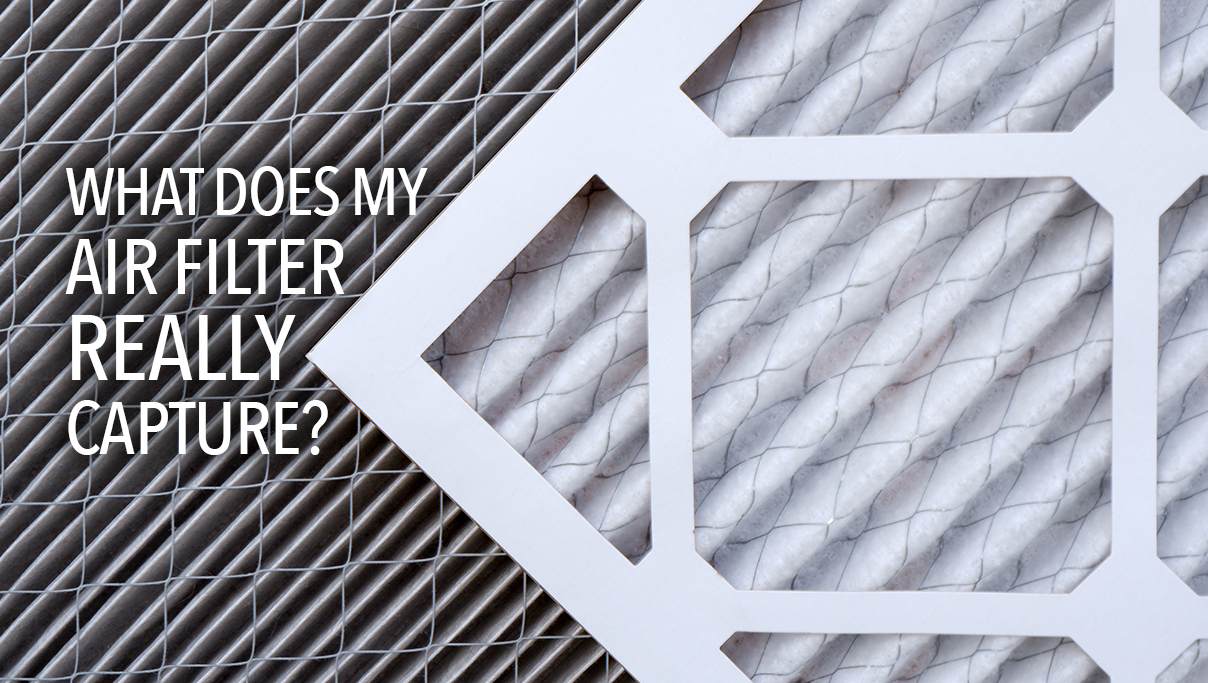
The air filter in your home does more work than you know. It captures particles large enough for you to see, as well as microscopic particles that you cannot see.
The capture rate of an air filter depends on its MERV rating. The higher the MERV, the more particles that the filter captures.
Particles That Your Air Filter Captures
Lint
We all know how much lint a load of laundry produces in the dryer. You probably already know that you should remove lint, a large particle, from the screen after each use and from the dryer vent occasionally. However, you may not know that lint can also enter your air ducts, where air filters must remove it.
Dust
Dust in your home is produced by a variety of sources. Soil, dead skin, and dust mite debris are probably the most familiar, since we can see them. Wiping down dusty surfaces with a damp cloth and vacuuming helps, but the right air filter helps eliminate dust that enters your ducts.
Mold spores
It is important to monitor moisture in your home, since it can promote the growth of mold. You cannot see mold spores in the air, but the right air filter can keep mold spores at bay. If you are unfamiliar with the long-term health damage that mold can cause, here are ten things you should know about mold from the EPA (U.S. Environmental Protection Agency).
Pollen
We usually see a surge of pollen during the spring and fall months, but some people suffer from year-round allergies to pollen. Many kinds of plants release tiny pollen particles that ride the wind and can find their way into your home. Your air filter can capture pollen particles, limiting your experience of annoying symptoms like an itchy nose, watery eyes, and sneezing.
Pet dander
If you're anything like us, we treat our fur babies like family. If you have a pet at home, you probably have pet dander. The correct air filter will remove these microscopic particles of skin from your indoor air, keeping you and your pets happy and healthy.
Smoke and smog
When most people think of smoke, they picture a fire or candle. By contrast, we tend to associate smog with highly populated cities. Both smoke and smog can cause or aggravate respiratory issues. Within your home, you can contribute to smoke and smog by cooking or burning candles frequently. Outdoor air could be a source, too, as in the example of wildfires. Be sure to ventilate your home correctly, and keep your windows closed when there is an alert in your area.
Bacteria and virus carriers
Due to recent world events, people are especially focused on protecting their families from airborne pathogens. While we cannot see either bacteria or viruses, bacteria are much larger than viruses. Fortunately, viruses in the airstream are frequently attached to larger particles. To protect against these potentially harmful particles in the air, be sure to select a filter with a rating of MERV 13 or higher for peace of mind.
Your filter works harder to protect your home than you realize. The types of particles that you want to protect against is an important consideration when you buy your next air filter. Also remember what your air filter has captured when it comes time to remove and dispose of it. You can find tips on proper disposal here.




Leave a comment